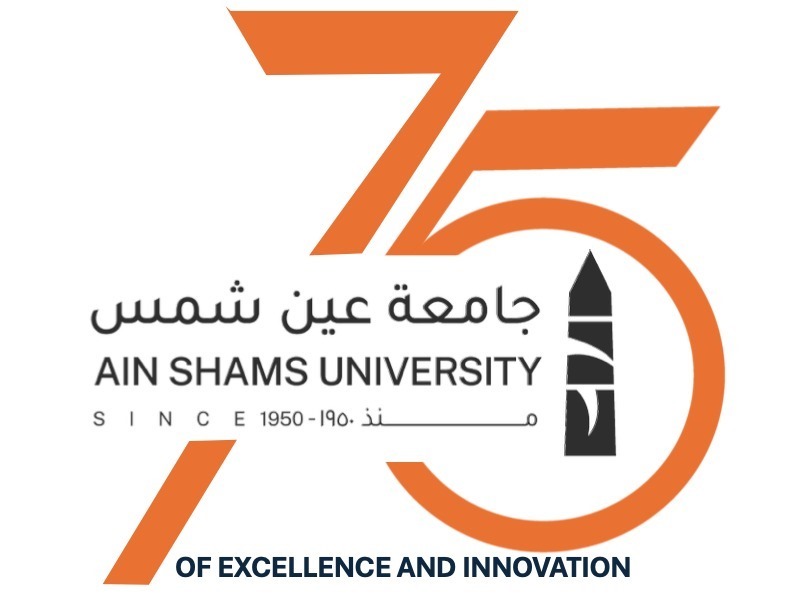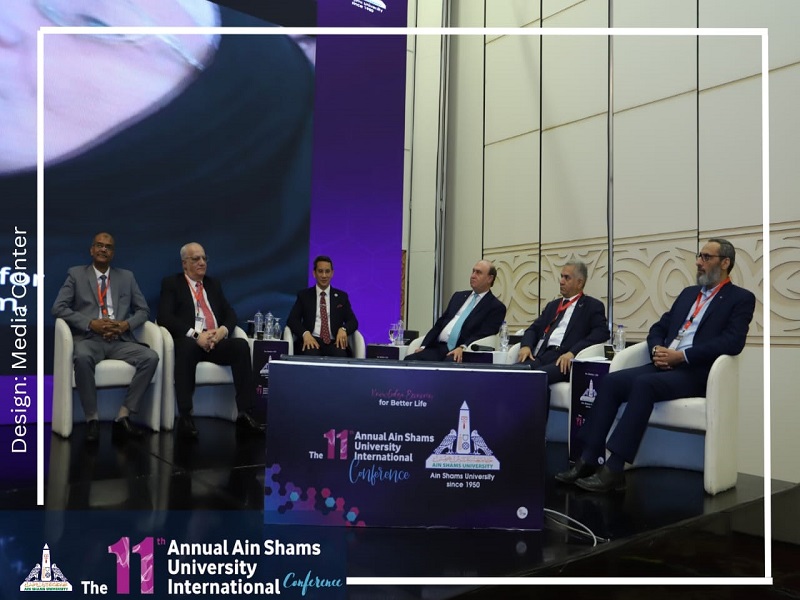The Egyptian Maritime Heritage through the Ages at Ain Shams University International Conference
Today, the sessions of the Eleventh International Scientific Conference of Ain Shams University continued, as a session entitled “Egyptian Maritime Heritage Through the Ages” was held today, headed by Prof. Hossam Tantawi, Dean of the Faculty of Archeology, and the presence of Lieutenant General Mohab Mameesh, Advisor to the President of the Republic for the projects of the Suez Canal axis and seaports, Chairman of the Suez Canal Authority and former Chairman of the General Authority for the Development of the Economic Zone of the Suez Canal, and Prof. Mamdouh El-Damaty, Minister of Antiquities and former dean of the Faculty of Archeology, prof. Dr.. Mohamed Ibrahim, former Minister of Antiquities, and Prof. Mustafa Atallah, Professor at Cairo University, and Dr. Muhammad Mustafa in the Central Department of Submerged Antiquities, members of the marine salon, and a group of faculty staff, teaching assistant and students.
Lieutenant General Mohab Mameesh confirmed that all the wars that passed through Egypt started from the Suez Canal, noting that the name Suez is taken from one of the gods of the ancient Egyptians. The Suez Canal, which took 10 years to be dug by the Egyptians by a million Egyptians, of whom 100,000 were martyred, to be a lifeline. It is indeed a claimant for development and life.
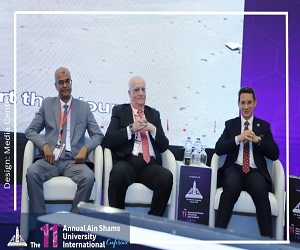 |
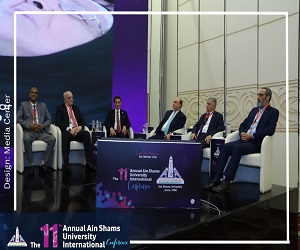 |
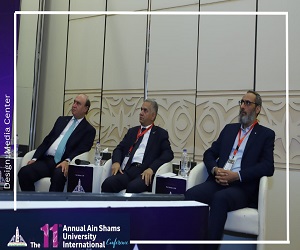 |
||
A documentary film was also shown on the history of the Suez Canal, since Muhammad Ali, through the July Revolution, the evacuation of the last English soldier, and the subsequent aggression of 1956, 1967, 1973, and the subsequent losses due to the closure and purification of the Suez Canal, taking into account the development of ship sizes, which necessitated the expansion of the submersible after The October War from 38 feet to 53 feet as the first expansion of the draft. His sovereignty also reviewed the efforts to secure the Suez Canal during the revolutions of January 25 and June 30 by sea, air and land, pointing to the development in shipbuilding in the past years, which necessitated the continuous deepening of the draft.
Admiral Mohab Mameesh referred to the beginning of the idea of creating a parallel channel, stressing that the determination and strength of the Egyptians is stronger than we can imagine.
Prof. Mamdouh El-Damaty, former Minister of Antiquities and former Dean of the Faculty of Archeology, talked on the history of the navy in Egypt, which dates back to at least 5400 years, since the Naqada civilization in the current city of Qena, which varied from warships or peace ships.
He referred to the Battle of the Delta, which was the first naval battle between the Egyptian army and a people he called the Peoples of the Sea, when Ramesses III, in 3200 BC, launched the first naval battle, where he established a strong fleet and planned to repel the attacks of the Sea Peoples in the Nile, in addition to commercial cruises during the reign of the king (Sahora).
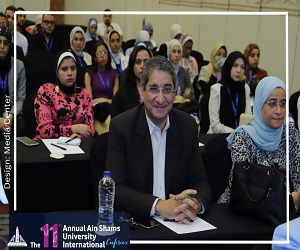 |
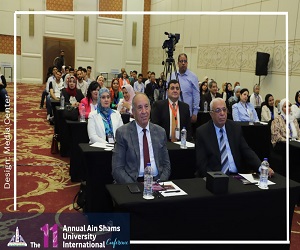 |
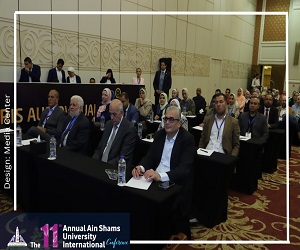 |
||
He also dealt with the biography of the naval commander, Iahmose Sa Ebana, who was the leader of the sailors, and narrated his story on the walls of his tomb, and how he appeared with Ahmose until Thutmose I reached the position of the commander of the sailors.
He also pointed out that the ancient Egyptians had used a boat transported in a hurry to ship the boat to the nearest sea point and use it, as happened in transporting stones to build temples as well as the pyramids.
Then, His Excellency presented the multiplicity of marine terms and the words of boats, which varied from cargo, sea, fishing boats, etc., pointing to commercial cruises to Puntland (naval battle of Thutmose III's fleet), and the battle of Ramesses III, and he also talked about commercial trips.
Prof. Muhammad Ibrahim, the former Minister of Antiquities, on the history of the boat industry in ancient Egypt, referred to the geography of Egypt and the presence of the Mediterranean and the Red Sea with long coasts, indicating that the ancient Egyptians tended to use the Nile for travel, as the importance of the Nile River to the ancient Egyptians was not limited to considering it only the main source of necessary water For agriculture, rather, it is the means that connects the two parts of Egypt, Upper Egypt and the Delta, and because of that, the ancient Egyptians sanctified it and represented it in the form of a man holding the rope connecting the two coastal regions, and for this reason it became a symbol of the unity of the state and at the same time it has some female features in the chest and abdomen, indicating fertility.
He reviewed the models of boats that were renewed in the tombs, as well as living models and papyri that explain how to work on the boat. The types of boats are like divine boats. The use of boats as a means of transportation was not limited to humans, but extended to the gods who were carrying them in their movement in the other world or even their statues during the ceremonial processions on board. Boats, as well as fishing boats, pleasure boats, commercial boats carrying obelisks and stones for the pyramids.
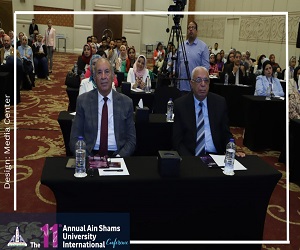 |
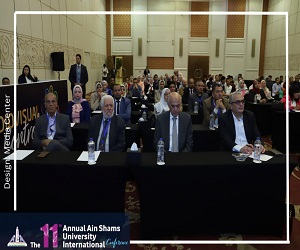 |
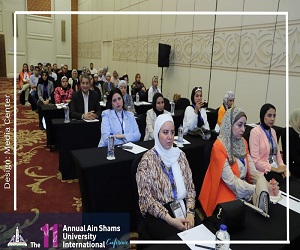 |
||
His Excellency then touched on the ways and how to make boats from papyrus, wood, where Babu Rawash discovered the oldest boat up to 13 meters long, as well as Abydos boats, Khufu boats and Dahshur boats, in addition to work tools in the ancient shipbuilding industry.
Prof. Mostafa Atallah, Professor of Ancient Egyptian Antiquities at Cairo University, referred to the names of boats in ancient Egypt, explaining that we rarely find a scene with a name on it, noting that the names of the boats varied between the name of the tree made from it or the name of the wood used or its uses such as imu, whose name is derived from the boats. Among the names of the industrial material, which is wood, either as a designation for wood or as a designation for the tree itself from which the wood is taken, there is, for example, the composite compound, whose name may have been derived from the word ima, which is likely to have been a designation for a tree, and also im or iam meaning “sweet or Athab" and it is likely that it was intended for trips and exercise, as well as passenger and livestock transport boats.
Prof. Muhammad Mostafa of the Central Department of Sunken Antiquities explained that there are about 32 sites in the Red Sea, the White Sea, the Nile, Lake Qarun and wells in the desert for sunken antiquities, reviewing the efforts exerted in discovering and discovering sunken antiquities, such as what happened in the port of Wadi al-Jarf, which is the oldest industrial port in the world and was established Near the copper mines, the port of East Abu Qir (the eighth century AD), where statues, coins, a painting representing aspects of daily life, Qaitbay site and the ancient lighthouse of Alexandria were discovered.


.svg)
